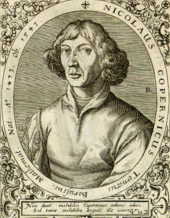Copernicium
| properties | ||||||||||||||||||||||||||||
|---|---|---|---|---|---|---|---|---|---|---|---|---|---|---|---|---|---|---|---|---|---|---|---|---|---|---|---|---|
| General | ||||||||||||||||||||||||||||
| Name , symbol , atomic number | Copernicium, Cn, 112 | |||||||||||||||||||||||||||
| Element category | ||||||||||||||||||||||||||||
| Group , period , block | 12 , 7 , d | |||||||||||||||||||||||||||
| CAS number | 54084-26-3 | |||||||||||||||||||||||||||
| Atomic | ||||||||||||||||||||||||||||
| Atomic mass | 277 u | |||||||||||||||||||||||||||
| Electron configuration | [ Rn ] 5 f 14 6 d 10 7 s 2 (?) | |||||||||||||||||||||||||||
| 1. Ionization energy | 1 155 kJ / mol | |||||||||||||||||||||||||||
| Physically | ||||||||||||||||||||||||||||
| Isotopes | ||||||||||||||||||||||||||||
|
||||||||||||||||||||||||||||
| For other isotopes see list of isotopes | ||||||||||||||||||||||||||||
| Hazard and safety information | ||||||||||||||||||||||||||||
 Radioactive |
||||||||||||||||||||||||||||
|
||||||||||||||||||||||||||||
|
As far as possible and customary, SI units are used. Unless otherwise noted, the data given apply to standard conditions . |
||||||||||||||||||||||||||||
Copernicium is a radioactive, artificially produced, non-naturally occurring chemical element with the element symbol Cn and the atomic number 112, which belongs to the transactinoids and is in the 12th IUPAC group , the zinc group , in the periodic table of the elements .
Extraction and presentation

Copernicium was first produced on February 9, 1996 at the Society for Heavy Ion Research (GSI) in Darmstadt by Sigurd Hofmann and Victor Ninov by fusing a zinc ( 70 Zn) and a lead ( 208 Pb) atom core:
properties
According to press releases from the Paul Scherrer Institute and the University of Bern on May 31, 2006, experiments showed that copernicium behaves chemically similar to mercury (Hg). This statement is based on the observation of only two atoms 283 Cn. These were created by bombarding plutonium with calcium and had a half-life of around four seconds.
Naming
Before the final naming the element had the systematic name Ununbium (chemical symbol Uub ), a form of Latin unum for, one 'and Latin up for twice', according to the atomic number 112. It was also known as Eka -Quecksilber referred composed of Sanskrit एक eka for 'one' and mercury , with reference to its classification in the periodic table 'one place below mercury'.
The discovery was recognized by IUPAC in May 2009 and officially confirmed on June 10, 2009. On July 14, 2009, the GSI proposed the name Copernicium (initially with the chemical symbol Cp) in honor of Nicolaus Copernicus (1473–1543). This proposal was examined by IUPAC and officially announced on February 19, 2010, the astronomer's 537th birthday, now with the chemical symbol Cn.
The symbol Cp, which was initially proposed, was used in German-speaking countries until 1949 for the element Cassiopeium , which is now called Lutetium (Lu). In addition, the symbol Cp is used in organometallic chemistry to denote the cyclopentadienyl ligand . For this reason, the IUPAC did not allow the use of the symbol Cp for Copernicium and instead suggested the symbol Cn as an alternative.
Web links
Individual evidence
- ↑ Entry on copernicium at WebElements, https://www.webelements.com , accessed on June 13, 2020.
- ↑ The hazards emanating from radioactivity do not belong to the properties to be classified according to the GHS labeling. With regard to other hazards, this element has either not yet been classified or a reliable and citable source has not yet been found.
- ^ Sigurd Hofmann , Victor Ninov , FP Heßberger, Peter Armbruster , H. Folger, Gottfried Münzenberg , HJ Schött, AG Popeko, AV Yeremin, S. Saro, R. Janik, M. Leino: The new element 112 . In: Journal of Physics A Hadrons and Nuclei . tape 354 , no. 3 , December 1996, pp. 229–230 , doi : 10.1007 / BF02769517 (English, available online as a preprint from cds.cern.ch [PDF; 211 kB ]).
- ↑ Beat Gerber: Super-Heavy Element 112 chemically investigated - experimentally landed on the island of artificial elements. Press release from the Paul Scherrer Institute . In: idw-online.de. Science Information Service , May 31, 2006, accessed on August 17, 2018 .
- ↑ Nathalie Matter: Super-Heavy Element 112 chemically investigated for the first time. Press release from the University of Bern . In: idw-online.de. Science Information Service , May 31, 2006, accessed on August 17, 2018 .
- ^ Chemistry of the super heavy element 112. In: E-Bulletin Nuklearforum Schweiz. May 30, 2006. Retrieved August 17, 2018 .
- ^ Robert C. Barber, Heinz W. Gäggeler, Paul J. Karol, Hiromichi Nakahara, Emanuele Vardaci, Erich Vogt: Discovery of the element with atomic number 112 (IUPAC Technical Report) . In: Pure and Applied Chemistry . tape 81 , no. 7 , July 2009, p. 1331–1343 , doi : 10.1351 / PAC-REP-08-03-05 (English).
- ^ Ralf Nestler: Chemistry: Heavy boys from Hessen. In: Der Tagesspiegel . June 11, 2009. Retrieved August 17, 2018 .
- ↑ Element 112 is to be called "Copernicium". In: gsi.de. GSI Helmholtz Center for Heavy Ion Research , July 14, 2009, accessed on August 17, 2018 .
- ↑ a b Kazuyuki Tatsumi, John Corish: Name and symbol of the element with atomic number 112 (IUPAC Recommendations 2010) . In: Pure and Applied Chemistry . tape 82 , no. 3 , March 2010, p. 753-755 , doi : 10.1351 / PAC-REC-09-08-20 (English).
- ↑ Christoph Seidler / dpa: Chemistry: The heaviest element is called Copernicium. In: SPIEGEL ONLINE . February 19, 2010, accessed August 18, 2018 .
- ^ Juris Meija: The need for a fresh symbol to designate copernicium . In: Nature . tape 461 , no. 7262 , September 17, 2009, p. 341 , doi : 10.1038 / 461341c (English).
- ↑ G. Urbain: Lutetium and Neoytterbium or Cassiopeium and Aldebaranium . In: Monthly magazine for chemistry . tape 31 , no. October 10 , 1910, p. I , doi : 10.1007 / BF01530262 .
